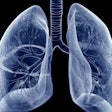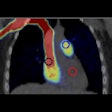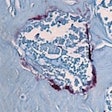A study led by investigators at the University of Louisville School of Dentistry may shed light on how tobacco smoke contributes to gum disease (Journal of Dental Research, November 1, 2010).
"We have known that smokers are more likely to get gum disease and more likely to develop the plaque buildup that contributes to gum disease, but the clinical conundrum has always been why do they actually have less of the inflammation in and around their gums that we normally see in gum disease," said David Scott, PhD, associate professor of oral health and systemic disease research at the School of Dentistry and lead investigator on this study. "Our study sought the answer or answers to that question."
The researchers compared saliva samples from 54 patients, including 22 smokers with periodontal disease, 15 smokers without periodontal disease, 15 nonsmokers with the disease, and 14 nonsmokers without the disease. The patients were treated at Ege University School of Dentistry in Turkey.
"We looked for molecules in the saliva samples that come from the bacteria that cause gum disease," Scott said. "We found that tobacco smoke appears to induce changes to one of these molecules, lipopolysaccharide (LPS). LPS normally induces inflammation in our gums, but in smokers LPS is altered in such a way that fails to stimulate inflammation. When this happens, the inflammatory and immune system is less able to deal with these gum pathogens and so gum disease develops."
The human body can recognize foreign compounds that are found on bacteria, and LPS, present in bacteria such as the types that cause periodontal disease, is one of these foreign molecules and it acts as a stimulant of the immune system, he added.
"The role of LPS is to trigger an immune response, but we believe the interaction between bacteria and tobacco smoke makes bacteria produce LPS that we cannot recognize properly," Scott said.
In fact, by the time many of these patients start to have symptoms, their disease can be fairly advanced and may be less responsive to current treatments.
The next step will be to investigate why LPS from oral bacteria in smokers is not recognized and to see if gum disease may develop differently in smokers than nonsmokers. It may be that researchers will then be able to develop different prevention and treatment strategies for cigarette smokers. Scott and his team recently received a five-year, $1.8 million grant from the National Institutes of Health to continue the work.
Copyright © 2010 DrBicuspid.com


















